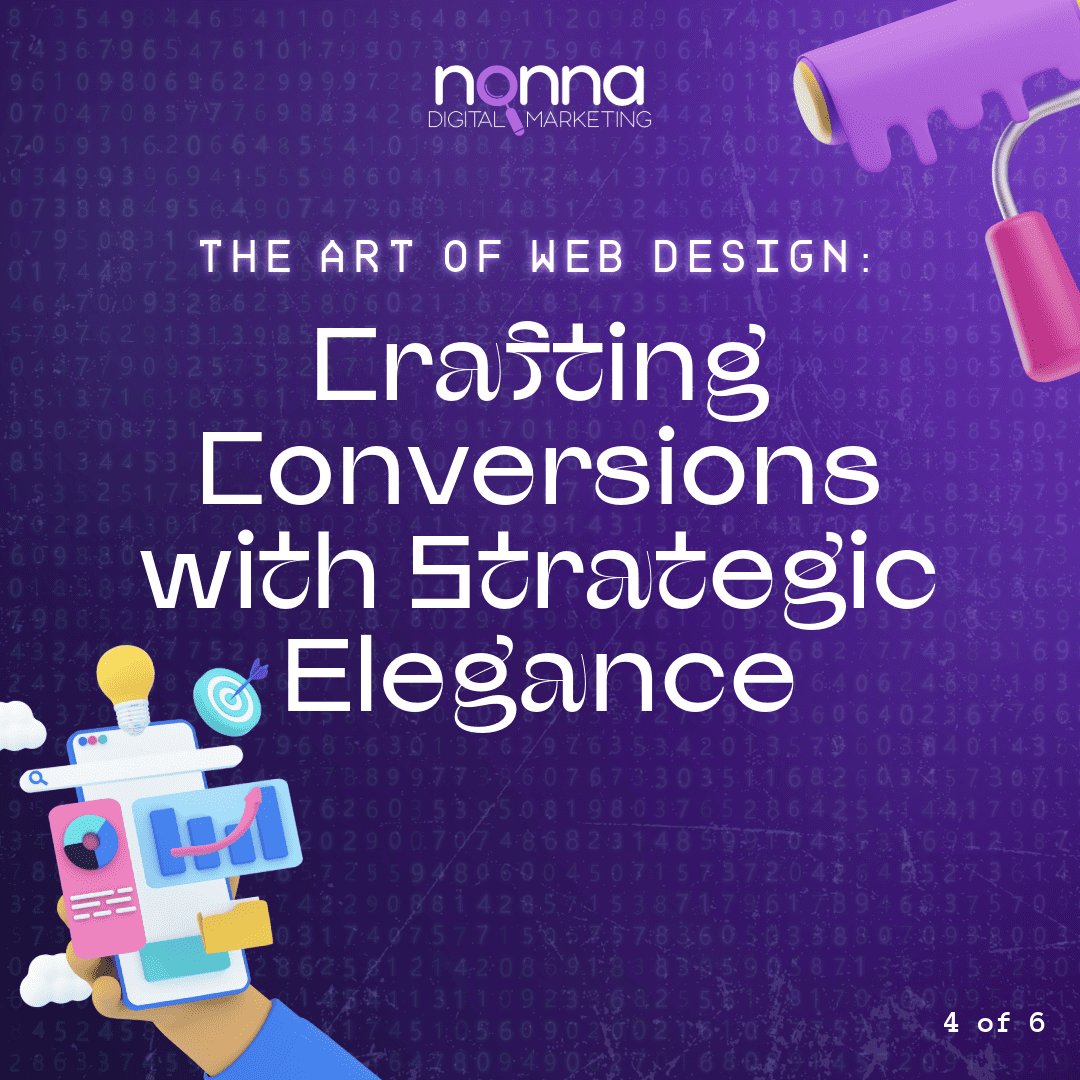In the digital age, where attention spans are short and competition is fierce, web designers face the challenge of creating websites that not only look visually appealing but also drive conversions. The art of web design involves crafting a seamless user experience that guides visitors through the conversion journey with strategic elegance. This article explores the various elements that go into designing a website that effectively converts visitors into customers. By understanding the conversion journey, marrying aesthetics with conversion-focused design, strategically placing conversion elements, building trust through design, incorporating visual storytelling, optimizing call-to-action (CTA) design, and implementing responsive design, web designers can create websites that captivate and convert.
Understanding the Conversion Journey
To design a website that converts, it is crucial to understand the conversion journey. The conversion journey refers to the path that a visitor takes from landing on a website to completing a desired action, such as making a purchase or filling out a contact form. By analyzing user behavior and identifying potential roadblocks, web designers can optimize the conversion journey. This involves streamlining the navigation, minimizing distractions, and providing clear and concise information. A well-designed conversion journey guides visitors through the sales funnel, making it easier for them to take the desired action.
The Marriage of Aesthetics and Conversion
Aesthetics and conversion are not mutually exclusive; in fact, they go hand in hand. A visually appealing website captures the attention of visitors and creates a positive first impression. However, aesthetics alone are not enough to drive conversions. Web designers must strike a balance between aesthetics and conversion-focused design. This involves using visual elements, such as colors, typography, and imagery, to create a visually pleasing website that also directs attention towards conversion elements. By incorporating strong visual hierarchy and clear calls-to-action, web designers can guide visitors towards the desired action while still maintaining a visually stunning website.
Strategic Placement of Conversion Elements
The strategic placement of conversion elements is crucial in maximizing conversions. Web designers must carefully consider where to position key elements, such as CTAs and forms, to increase their visibility and effectiveness. Placing CTAs above the fold, where they are immediately visible without scrolling, can significantly impact conversion rates. Additionally, using contrasting colors and compelling copy can draw attention to these elements. Forms should be strategically placed throughout the website, making them easily accessible and intuitive to fill out. By strategically positioning conversion elements, web designers can enhance the user experience and encourage visitors to take action.
Building Trust through Design
Trust is a fundamental factor in converting visitors into customers. Web designers can build trust through effective design choices. This includes using high-quality images, testimonials, and trust badges to establish credibility. Clear and transparent communication is also essential in building trust. Web designers should ensure that all information is easy to find, accurate, and up to date. Additionally, incorporating security features, such as SSL certificates, can help instill confidence in visitors. By prioritizing trust in design, web designers can create a website that inspires confidence and encourages visitors to convert.
Visual Storytelling for Conversions
Visual storytelling is a powerful tool in web design that can significantly impact conversions. By using compelling visuals, such as images, videos, and infographics, web designers can engage visitors on an emotional level and convey information more effectively. Visual storytelling allows for the communication of complex ideas in a concise and engaging manner. Web designers can leverage storytelling techniques, such as using a narrative structure or incorporating user testimonials, to create a more immersive and persuasive experience. By harnessing the power of visual storytelling, web designers can captivate visitors and increase conversion rates.
Call-to-Action (CTA) Design: Crafting Irresistible Invitations
The design of a call-to-action (CTA) is crucial in motivating visitors to take the desired action. A well-designed CTA stands out from the rest of the page and creates a sense of urgency or excitement. Web designers should use contrasting colors, compelling copy, and clear instructions to make CTAs irresistible. Additionally, incorporating persuasive elements, such as social proof or limited-time offers, can further enhance the effectiveness of CTAs. It is also important to consider the placement and visibility of CTAs. By strategically designing CTAs, web designers can create irresistible invitations that drive conversions.
Responsive Design and Conversion
In today’s mobile-dominated world, responsive design is no longer an option but a necessity. A responsive website adapts to different screen sizes and devices, ensuring a consistent user experience across platforms. Responsive design is not only important for usability but also for conversion. A website that is not mobile-friendly can deter visitors and lead to higher bounce rates. Additionally, responsive design can improve page load times, which is crucial for conversion rates. By implementing responsive design, web designers can create a seamless user experience that maximizes conversions across all devices.
Conclusion
The art of web design involves more than just creating visually appealing websites. It requires a deep understanding of the conversion journey, a marriage of aesthetics and conversion-focused design, strategic placement of conversion elements, building trust through design, incorporating visual storytelling, optimizing call-to-action design, and implementing responsive design. By carefully considering each of these elements, web designers can craft websites that not only captivate visitors but also drive conversions. In the competitive digital landscape, a well-designed website can make all the difference in achieving business goals. So, embrace the art of web design and start crafting conversions with strategic elegance.
Ready to take your website to the next level? Work with Nonna Digital Marketing to create a conversion-focused website that drives results. Contact us today!


